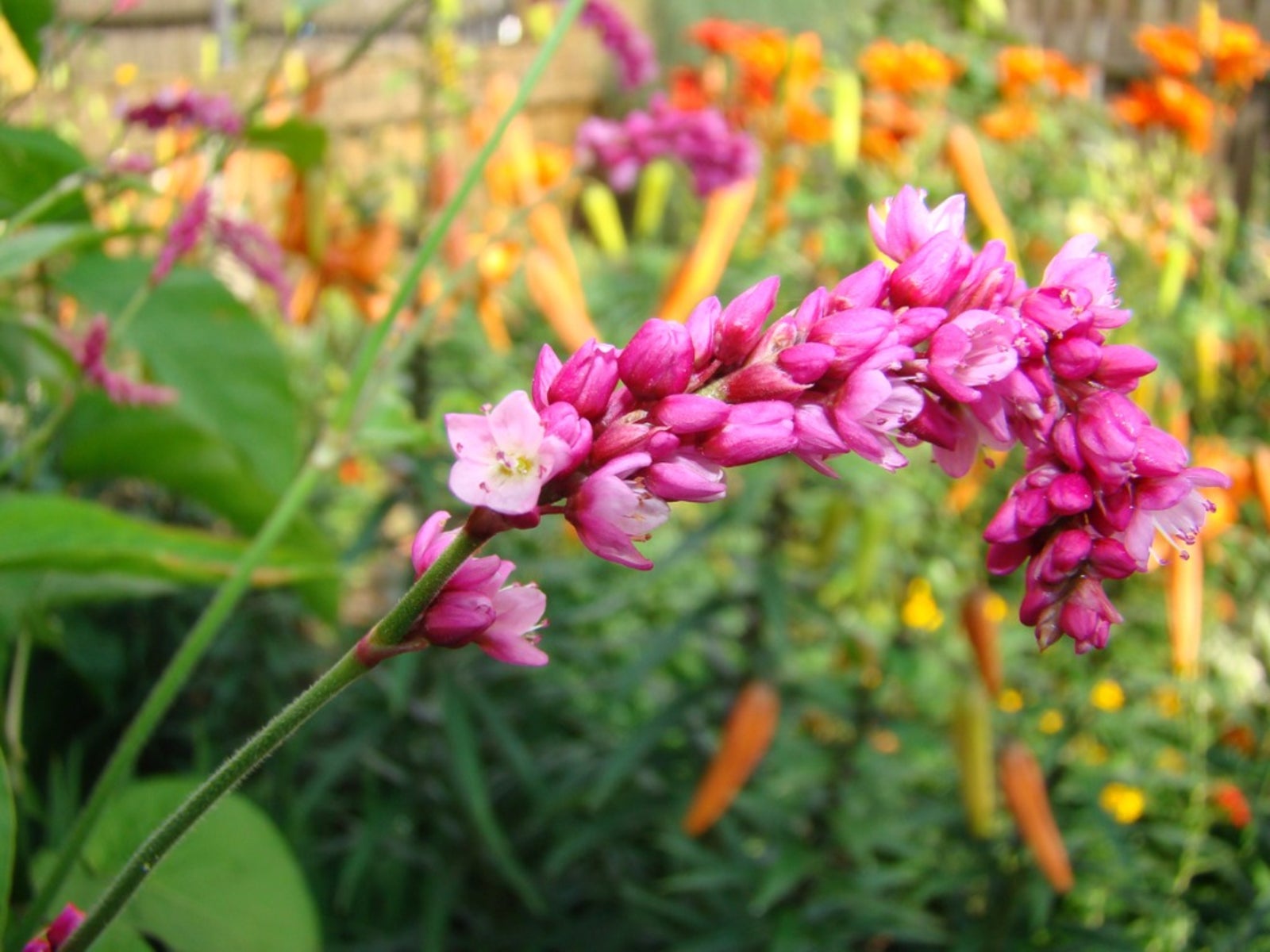Care For Kiss-Me-Over-The-Garden-Gate: Growing Kiss-Me-Over-The-Garden-Gate Flower


If you’re looking for a big, bright, easy-to-care-for flowering plant that’s a little off the beaten path, kiss-me-over-the-garden-gate is an excellent choice. Keep reading for growing kiss-me-over-the-garden-gate info.
What is Kiss-Me-Over-the-Garden-Gate Plant?
Kiss-me-over-the-garden-gate (Polygonum orientale or Persicaria orientale) used to be very popular in the U.S. Originally from China, it was a particular favorite of Thomas Jefferson. As time went on and the popularity of compact, easily transplanted flowers grew, the kiss-me-over-the-garden-gate flower fell out of favor. It’s making a comeback now though, as more gardeners are learning about its benefits.
Kiss-Me-Over-the-Garden-Gate Info
Kiss-me-over-the-garden-gate is a very fast-growing annual that self-seeds in the fall. Once you’ve planted it, you’re likely to have the flower in that spot for years to come. While the plant can grow up to 7 feet (2 m.) tall and 4 feet (1 m.) wide, it rarely, if ever, needs to be staked. The kiss-me-over-the-garden-gate flower blooms in 3-inch (7.5 cm.) long spiky clusters that hang pendulously in shades of red to white to magenta.
Care for Kiss-Me-Over-the-Garden-Gate
Care for kiss-me-over-the-garden-gate is very simple. It grows fast and transplants poorly, so you won’t find seedlings in the store. Seeds need to be chilled before they germinate, so store them in the fridge for a few weeks beforehand in the spring or sow them directly in the ground if you acquire them in the fall. Sow them by pressing the seeds lightly into the soil in a place that receives full sun. Once the seedlings have sprouted, thin them to one every 18 inches (45.5 cm.). In 100 days, you should have blooms that continue to the fall frost. Growing kiss-me-over-the-garden-gate plants have very few pest problems. The only real danger comes from Japanese beetles, which may be drawn to the leaves. If you notice that some of your leaves are skeletonized, place traps and lures around the outside of your property to guide them away from your plants.
Sign up for the Gardening Know How newsletter today and receive a free copy of our e-book "How to Grow Delicious Tomatoes".

The only child of a horticulturist and an English teacher, Liz Baessler was destined to become a gardening editor. She has been with Gardening Know how since 2015, and a Senior Editor since 2020. She holds a BA in English from Brandeis University and an MA in English from the University of Geneva, Switzerland. After years of gardening in containers and community garden plots, she finally has a backyard of her own, which she is systematically filling with vegetables and flowers.